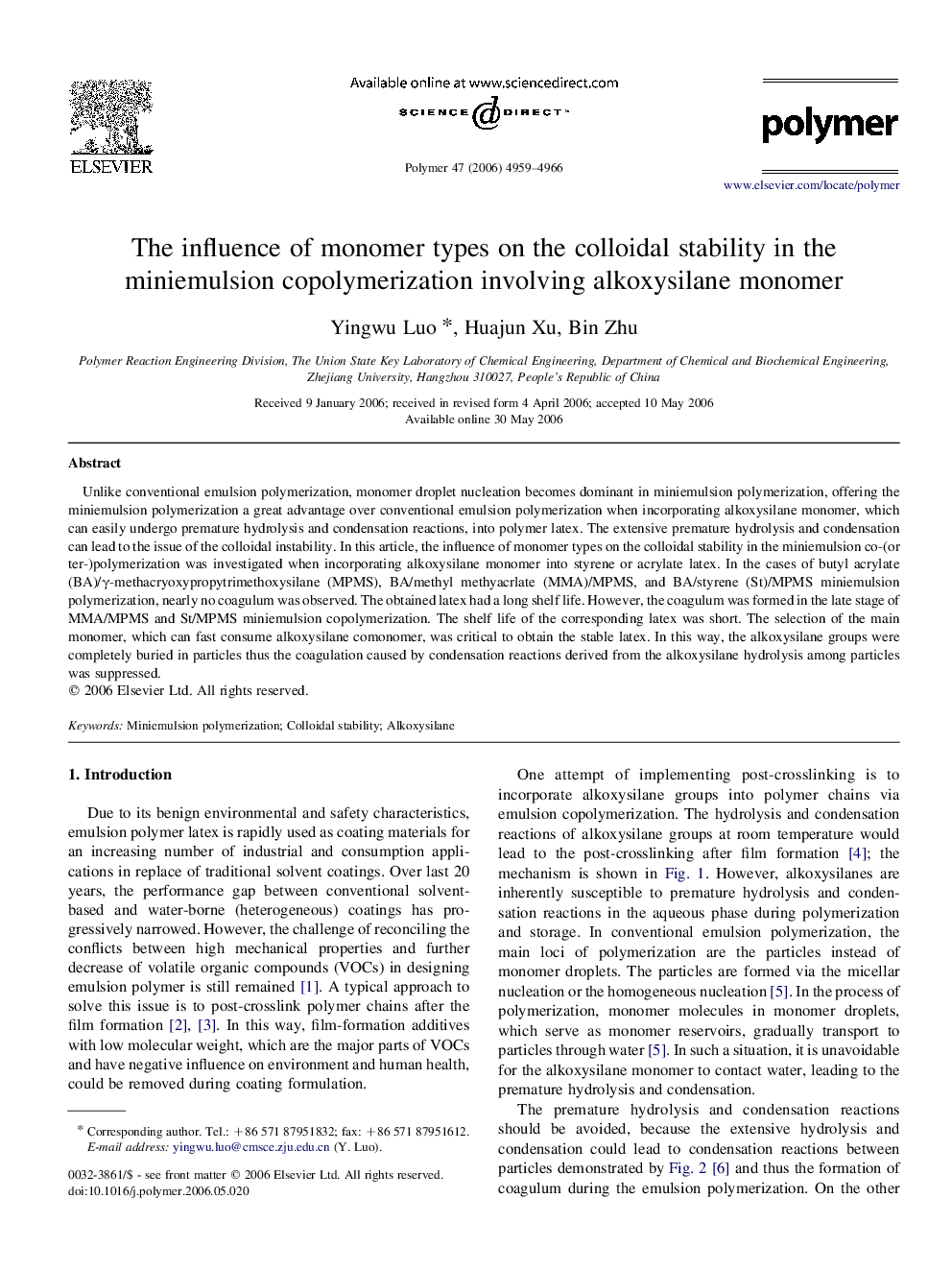| Article ID | Journal | Published Year | Pages | File Type |
|---|---|---|---|---|
| 5189362 | Polymer | 2006 | 8 Pages |
Abstract
Unlike conventional emulsion polymerization, monomer droplet nucleation becomes dominant in miniemulsion polymerization, offering the miniemulsion polymerization a great advantage over conventional emulsion polymerization when incorporating alkoxysilane monomer, which can easily undergo premature hydrolysis and condensation reactions, into polymer latex. The extensive premature hydrolysis and condensation can lead to the issue of the colloidal instability. In this article, the influence of monomer types on the colloidal stability in the miniemulsion co-(or ter-)polymerization was investigated when incorporating alkoxysilane monomer into styrene or acrylate latex. In the cases of butyl acrylate (BA)/γ-methacryoxypropytrimethoxysilane (MPMS), BA/methyl methyacrlate (MMA)/MPMS, and BA/styrene (St)/MPMS miniemulsion polymerization, nearly no coagulum was observed. The obtained latex had a long shelf life. However, the coagulum was formed in the late stage of MMA/MPMS and St/MPMS miniemulsion copolymerization. The shelf life of the corresponding latex was short. The selection of the main monomer, which can fast consume alkoxysilane comonomer, was critical to obtain the stable latex. In this way, the alkoxysilane groups were completely buried in particles thus the coagulation caused by condensation reactions derived from the alkoxysilane hydrolysis among particles was suppressed.
Related Topics
Physical Sciences and Engineering
Chemistry
Organic Chemistry
Authors
Yingwu Luo, Huajun Xu, Bin Zhu,
